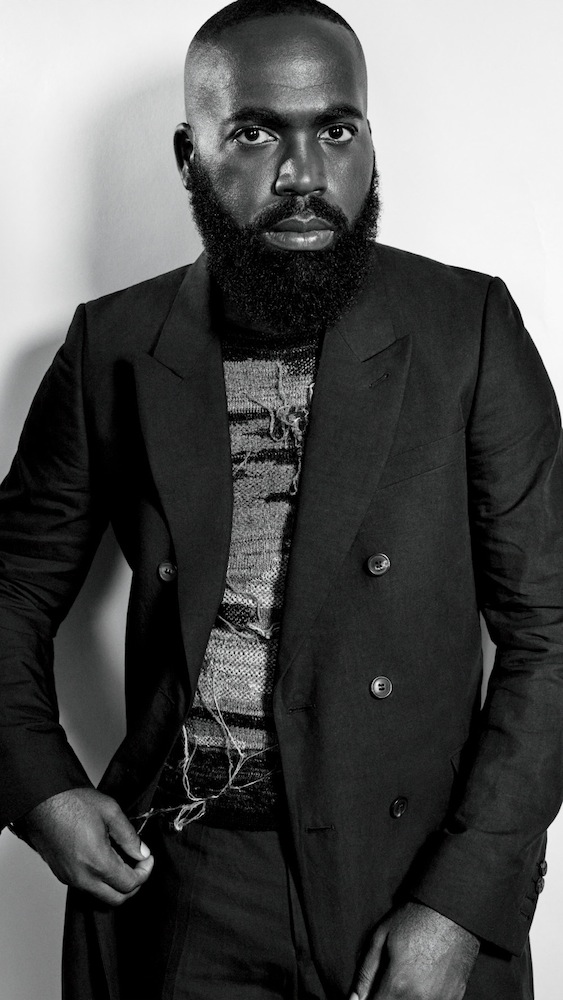Derrick Adams

Derrick Adams is unabashedly captivated by popular culture. He culls content from TV commercials and YouTube to fuel his radically prescient multidisciplinary practice, which includes photography, performance, sculpture, and collage—all of it built upon openness, playfulness, and the potential for participation. He’s created six-foot-tall wall hangings (woven together from dashikis and mass-produced fabrics) to form improvisational stages for which he serves as emcee, directing collaborative performers. His collages elevate the snapshot aesthetic; his Floater works, for example, depict subjects on pool floats—idle moments made undeniable and concrete. Even when working in an age-old form, the portrait in profile, Adams makes it his own—discrete blocks of color or texture form each black self—each subject a collage of their own color (and history).
BORN: Baltimore.
BASED: Brooklyn.
AGE: 46.
I MAKE: Sculpture, video, performance, multimedia work.
FIRST WORK OF ART I EVER SAW: My uncle Cliffy’s. He was a commercial artist—mostly hand-drawn advertising logos and other pen-and-ink drawings.
TO CREATE ART, I NEED: My playlist and a pad and pencil. I think of it as a survival kit: Wherever you are, you can still make art.
I WANT PEOPLE TO KNOW: That being an artist is fun. It’s a lot of work, but it’s good work, and it’s an important position to be in.
WHEN I STARTED CALLING MYSELF AN ARTIST: I was in elementary school, and I won an award in a contest. Part of the award was to meet the mayor of Baltimore, and my work was even hung in his office for a while.
WHAT I DO WHEN I FEEL NERVOUS ABOUT A WORK: I put it out there.
THE MOST DIFFICULT WORK I’VE CREATED: Isn’t here yet. As the work becomes more stable, I move on to something else. I want to be immersed in what I’m doing, and when you’re unfamiliar with it, you become more present.
HOW I WORK THROUGH A BLOCK: Making art survival. When I’m in a space that has restraints, or conditions that will not allow me to operate in the way that I operated last week, I think of the work not as art-making, but as a form of therapy.
I’LL ALWAYS ADMIRE: Black American artists before me who maintained a steady practice, even when no one was giving them the coverage they deserved.
FOR MORE FROM OUR UNSCRIPTED SERIES, CLICK HERE.







